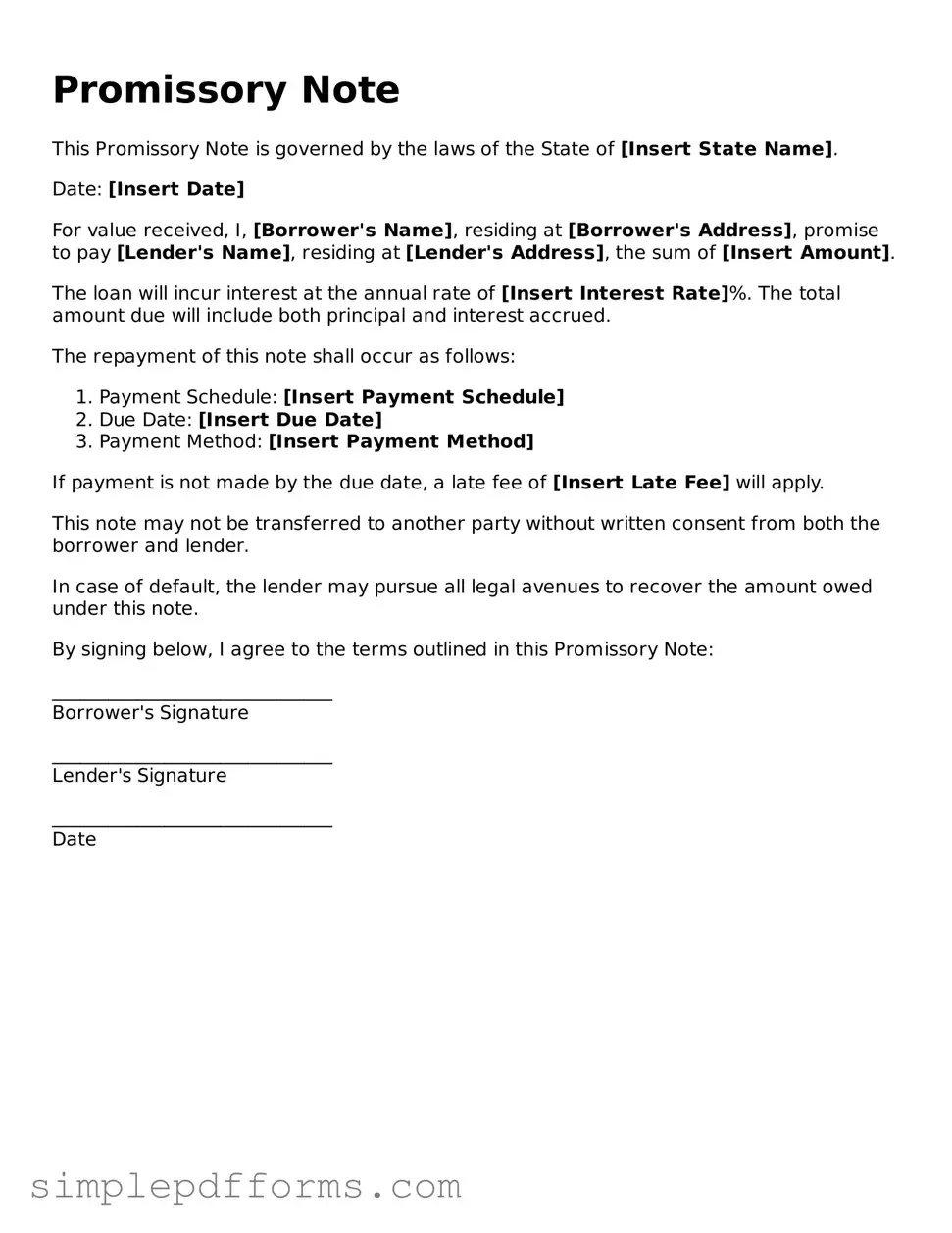Promissory Note
This Promissory Note is governed by the laws of the State of [Insert State Name].
Date: [Insert Date]
For value received, I, [Borrower's Name], residing at [Borrower's Address], promise to pay [Lender's Name], residing at [Lender's Address], the sum of [Insert Amount].
The loan will incur interest at the annual rate of [Insert Interest Rate]%. The total amount due will include both principal and interest accrued.
The repayment of this note shall occur as follows:
- Payment Schedule: [Insert Payment Schedule]
- Due Date: [Insert Due Date]
- Payment Method: [Insert Payment Method]
If payment is not made by the due date, a late fee of [Insert Late Fee] will apply.
This note may not be transferred to another party without written consent from both the borrower and lender.
In case of default, the lender may pursue all legal avenues to recover the amount owed under this note.
By signing below, I agree to the terms outlined in this Promissory Note:
______________________________
Borrower's Signature
______________________________
Lender's Signature
______________________________
Date
